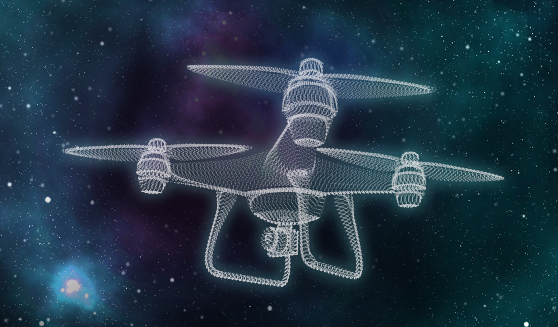
Unmanned aerial vehicles, or drones, are making their presence felt in remote location. Soon they will be whizzing past in urban settings.
Drones, or unmanned aerial vehicles, are expected to proliferate around the world given their adaptability in civil and defence spheres.
The uses of drones is truly unlimited: from looking for leaks in crude oil pipeline in remote locations, to providing food and medicine and emergence services in remote locations, monitoring, photographing and surveying lands or sensitive installations or simply delivering packages.
Drones are especially being rapidly adopted in agriculture and farming due to their ability to analyse land in a short space of time and provide data fast. There are several benefits to using agriculture drones for greater efficiency, such as: carrying out field surveys, estimating crop yield and keeping track of livestock.
These advances in drone technologies are reminiscent of a futurist society – one where the promise of possibilities offered by technology brings to mind visions of flying cars, robots taking on tasks previously done by humans, and all things “smart,” according to a study done by Transport Canada.
“Drones are an emerging form of the Internet of Things, with capabilities growing in automation, artificial intelligence, and connectivity via intelligent transportation systems, including automated and connected vehicles and smart cities.”
The global drones industry was valued at US$27.4 billion by the end of 2021 and is expected to roughly double to US$57.4 billion by 2026, according to Statista.
Currently, inspection is the most common use of the drone technology, according to the latest Drone Industry Barometer 2021 survey, followed by mapping and surveying, photography & filming, localization and tracking, delivery and spraying and seeding, according to the survey by Drone Industry Insights.
“Saving time (75%), and the associated increase in overall productivity, is for the first time not the leading reason anymore. Improving result quality ranks first with 82%, which speaks a lot for the work that drones carry out and their capacity to deliver better results than other alternatives,” DII noted.
“Using drones to improve overall safety by bringing workers out of harm’s way (70%) is even more important than directly saving costs (61%).”
The rise of drones is also coinciding with the remotization of the work, which has compelled many companies to lean on technologies.
“In this context, drones play a big role in data acquisition (sensing), dispensing and seeding (acting) and transportation of goods (delivery),” the consultancy noted
Saudi Arabia’s 4th Industrial Revolution identifies advancement in drones as one of its key areas of focus. Saudi Arabian Oil Company, or Saudi Aramco, has already deployed robotics and drone as part of its robust digitalization strategy. The technology allows the world’s largest oil and gas company to develop safer and more efficient inspection capabilities, ensure early detection of leaks, support aerial mapping, underwater welding and environmental monitoring, as well as inspecting assets like offshore rigs and pipelines in difficult to access locations.
“The use of drones and wearable technologies to inspect pipelines and machinery – such as digital helmets that capture video images and glasses that load information directly on to the lens – has helped cut inspection time by 90%,” the company said.
Abu Dhabi’s Department of Health is also deploying advanced to distribute and transfer medical supplies within the healthcare sector.
“The project, a first of its kind in the Middle East and North Africa, will create a state-of-the-art delivery system and network using drones at 40 stations throughout the year 2022. The delivery and transfer system will have around the clock service and form part of the emergency response network available at healthcare facilities in Abu Dhabi,” the Department said in September 2021.
The initiative aligns with the goals of the UAE’s Fourth Industrial Revolution (4IR) Strategy, and broader strategies to position Abu Dhabi as an innovation centre.
Neighbouring Dubai is also eyeing an opportunity in the nascent sector with “The Dubai Programme to Enable Drone Transportation,” tasked with creating an advanced infrastructure that enables innovators and relevant entities to test prototypes of unmanned aerial vehicles in designated areas and develop legislation that optimises their implementation.
“We have the right environment, infrastructure, and legislation for the use of drones. We also have the laboratories, expertise and talent to translate prototypes into viable solutions,” said Sheikh Hamdan bin Mohammed bin Rashid Al Maktoum, Crown Prince of Dubai and Chairman of Dubai Executive Council, and Chairman of the Board of Trustees of Dubai Future Foundation.
DFF will oversee the developments being undertaken by the Dubai Program to Enable Drone Transportation through Dubai Future Labs, the first applied R&D lab in the region specializing in future technology, in partnership with Dubai Civil Aviation Authority, Dubai Silicon Oasis Authority, Majid Al Futtaim, and Emirates SkyCargo, among others.
“The MoU will also leverage Dubai Programme for Autonomous Air Vehicle Services in designated test zones across Dubai. It will also support the Dubai Self-Driving Transport Strategy aimed to convert 25% of total mobility journeys to driverless journeys by 2030,” said Mattar Mohammed Al Tayer, Director-General Chairman of the Board of Executive Directors of the Roads and Transport Authority.
With companies such as Amazon.com Inc. eyeing deliveries via drones and the technology already being deployed in a number of commercial setting, the era of drones is near. ©








